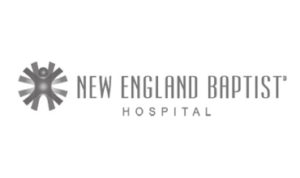Universal Viewing
NEBH’s initial solution included a program where physicians associated with the hospital who wanted to view images at Baptist had been given a full-fledge PACS station either on or off-site. Managing this approach was both highly expensive and highly inefficient as few practices had IT help and physicians were often juggling multiple hats. Today, imaging is available through the entire network, including on mobile devices and any computer with a browser. Additionally, all NEBH EHRs including Soarian, athena, and eClinical works have been image enabled, providing contextually relevant access to imaging.
“Because both NEBH and outside studies are available in Ambra, the physicians can easily hang priors performed at other facilities next to more recent studies done within the hospital.”
– Tyler Martin, Executive Director, Ambulatory Network Operations
Error Free CD Upload
Uploading imaging off CDs was done at one central film library, which proved to be a manual and error prone process. An uploader had to upload the study, open it, figure out the patient, create an order, copy and paste the order, and then save the study. It was a miracle if the process only took 15 minutes. This highly manual and frustrating methodology was only possible within the walls of the facility, and was often riddled with errors. With the cloud-based CD uploader, front desk administrators at clinics can upload studies within 5 minutes and the study becomes available for network wide viewing immediately. Ambra’s auto film library auto ingests 70% of studies with no human intervention.
Cloud VNA Provides Access to Priors
NEBH has been able to archive their entire imaging data set in a cloud VNA. Over 300-500 images are uploaded in the cloud VNA per week as surgeons use the images for preadmission screenings and surgical planning. Administrators utilize the VNA to check images for quality, verify image counts, and burn CDs if necessary. Additionally, in keeping with patient-minded goals, patients can upload their images from home prior to appointments through a link on the hospital’s website.
“We now have a more streamlined workflow, allowing studies to more rapidly arrive within the treatment plan for the patient.”
– Tyler Martin, Executive Director, Ambulatory Network Operations
 New England Baptist Hospital (NEBH) is the premier regional provider for orthopedic surgery and the treatment of musculoskeletal diseases and disorders. NEBH operates on a unique model, as over 95% of the physicians associated with the hospital are private practice physicians. As a result, NEBH deals with a large number of disparate and siloed systems. The unification of systems to provide access to medical imaging across a broad regional network was presenting itself as a cumbersome challenge. As NEBH began looking for alternative solutions, it was clear that a cloud and zero-footprint system was becoming a necessity. It was critical that a physician could view imaging outside of hospital firewalls and that patients could upload CDs at home, speeding up time-to-care delivery.
New England Baptist Hospital (NEBH) is the premier regional provider for orthopedic surgery and the treatment of musculoskeletal diseases and disorders. NEBH operates on a unique model, as over 95% of the physicians associated with the hospital are private practice physicians. As a result, NEBH deals with a large number of disparate and siloed systems. The unification of systems to provide access to medical imaging across a broad regional network was presenting itself as a cumbersome challenge. As NEBH began looking for alternative solutions, it was clear that a cloud and zero-footprint system was becoming a necessity. It was critical that a physician could view imaging outside of hospital firewalls and that patients could upload CDs at home, speeding up time-to-care delivery.